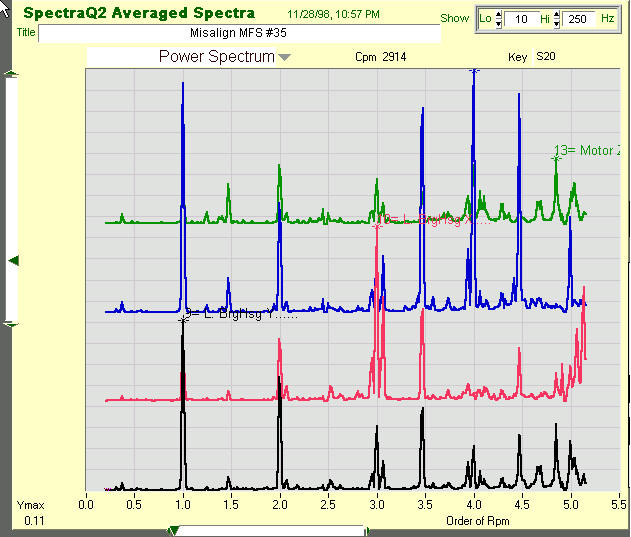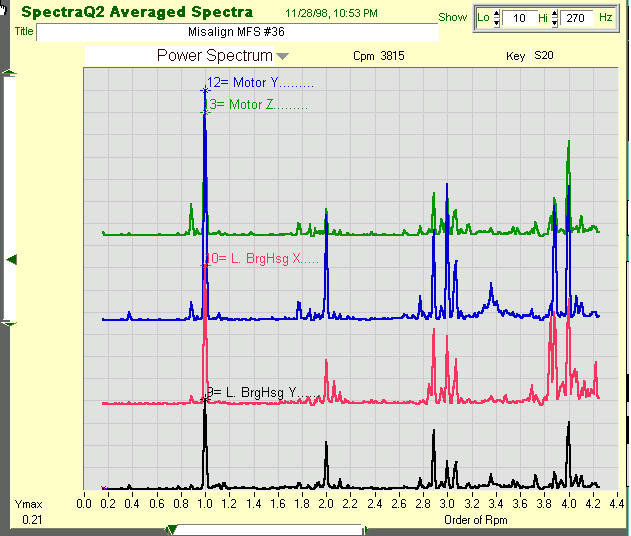Observations Concerning Misalignment Vibration Signatures
Lin Liu & Suri GaneriwalaSpectraQuest Inc., 8227 Hermitage Road, Richmond, VA 23228
Published: November, 2003
Abstract
Misalignment is a common cause of machinery malfunction. Considering the importance of alignment, the vibration spectrum of misalignment is not well documented. This report is based on the research to determine the unique vibration signature for misalignment at varying operating and design conditions such as speed, type and level of misalignment, coupling types and machinery dynamic stiffness. The SpectraQuest Machinery Fault SimulatorTM was used in the study to create the varying mechanical conditions. Tri-axial vibration measurements were taken at each end of the coupling on the motor and rotor bearing housings. Data was collected at several other locations of the Simulator. The results indicate that the speed and the coupling type/stiffness have a strong effect on the vibration spectra. The level and type of misalignment had a significant effect on the vibration signature. No unique signature was observed, suggesting that care is needed to correctly diagnose misalignment.
Introduction
Misalignment is a common cause of machinery malfunction. A poorly aligned machine can cost a factory 20% to 30% in machine down time, replacement parts, inventory, and energy consumption. A large payback is often seen by regularly aligning machinery. Operating life is extended and process conditions are optimized.
Vibration signatures are widely promoted for studying machine malfunctions. However, the literature does not present a clear picture of signature characteristics uniquely attributable to misalignment. Different authors report different signatures. There are no reports of systematic, controlled experiments with varying parameters.
This is a report of a systematic series of experiments designed to elucidate the consistent features, if any, of vibration signatures for misaligned machinery. Three machine-operating parameters, coupling types, amount of misalignment and the motor speed, were systematically varied while all other parameters were held constant. The machine was fault-free with the exception of deliberate misalignment, which was varied systematically. Baseline vibration data was recorded for each of the test conditions.


Fig: Comparisons of Vibration Spectra of the Left Bearing Housing and the Motor in vertical and axial directions of the Misaligned MFS with the Steel Coupling at Two Different Speeds and 20 mils misalignment. The graphs illustrate the strong effect of speed on the spectra and its amplitude. At higher speed note the higher peak at 2X than 1X. Also, note modulation at the higher harmonics. The frequency scale is displayed as Order of RPM. Graphs are shifted vertically to clarify the differences. The vertical scale is 0.2 G's per block.





